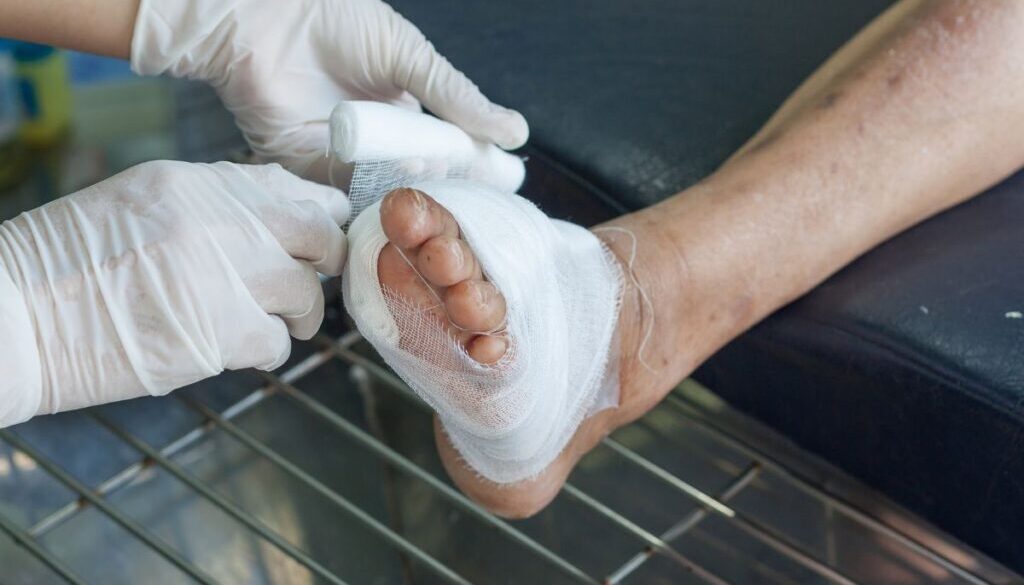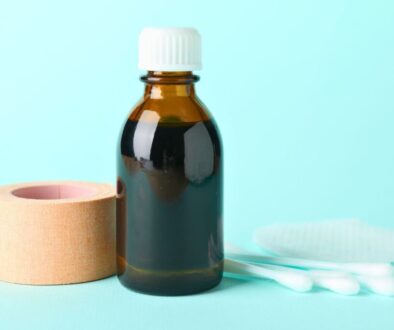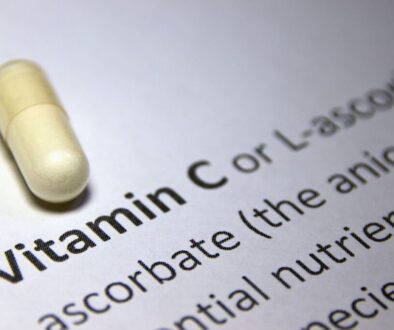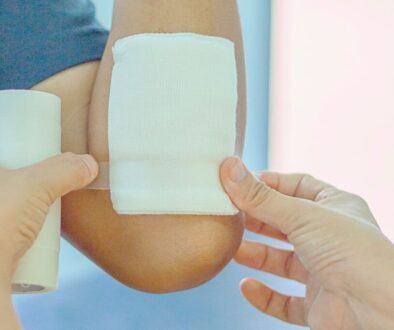How To Treat Pressure Ulcers & Bedsores

Who Is At Risk Of Developing Pressure Ulcers?
Individuals who cannot move independently face the highest risk. This includes those with spinal cord injuries, paralysis, strokes, or neurological conditions. It also includes individuals with reduced mental awareness. Older adults, especially those over 70, are more susceptible due to thinner skin that heals more slowly.
Additional risk factors include smoking, malnutrition, incontinence, diabetes, and circulatory issues. Individuals who are bedridden or use wheelchairs are especially vulnerable to pressure ulcers. This is particularly true for those in nursing homes or hospitals.
Recognizing The Signs And Symptoms Of Pressure Ulcers
Pressure ulcers develop in several stages, each characterized by specific symptoms:
- Stage 1. The skin remains intact but exhibits redness or discoloration. This may manifest as subtle color, warmth, or texture changes among persons with darker skin tones.
- Stage 2. The skin breaks down, forming a blister or an open sore accompanied by redness and swelling in the affected area.
- Stage 3. The ulcer progresses into a deep crater, penetrating the underlying layers of skin.
- Stage 4. Damage extends to deep tissue, affecting muscle and bone, and may form a thick black scab known as eschar.
In addition to the usual pressure ulcer locations on buttocks, other common areas include the tailbone, shoulder blades, and spine. Wheelchair users often develop ulcers on the backs of their arms and legs. For bedridden patients, common sites are the back of the head, ears, hips, lower back, and heels.
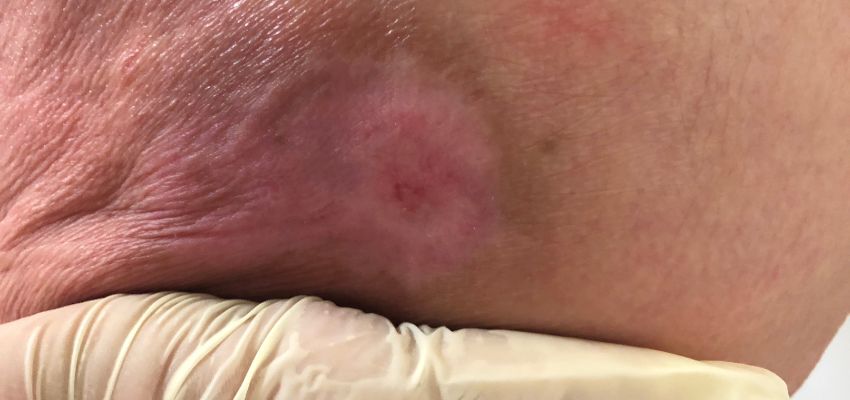
Self-Care Measures
Self-care is vital for early-stage pressure ulcers (stages 1 and 2). Effective strategies include the following:
- Alleviate pressure by changing positions regularly: every 15 minutes while seated and every 2 hours in bed.
- Utilize cushions, pads, or specialized mattresses to help distribute pressure.
- Maintain excellent skin hygiene by gently washing with mild soap and water.
- Clean any open sores using a saline solution (boil 1 quart of water with one teaspoon of salt for 5 minutes, then allow it to cool).
- Dab on a thin coating of petroleum jelly and cover the area with soft gauze.
- Keep the affected area free from urine and stool.
Additionally, adequate nutrition is important for skin healing. Vitamin C and zinc supplements can further support this process.
Management Of Pressure Ulcers
Managing pressure ulcers is vital in patient care. This is especially true for individuals with limited mobility or chronic conditions. Effective treatments for pressure ulcers include:
- Specialized pads or mattresses that relieve pressure on sensitive areas of the body. These products distribute weight evenly to help prevent skin breakdown.
- Advanced dressings that protect and promote the healing of sores include amniotic allografts. These provide a matrix for tissue regeneration and act as a barrier against contaminants and infection. They keep the wound moist and help cells migrate, significantly improving healing.
- Whirlpool baths or surgical interventions may be required to eliminate dead or necrotic tissue from the wound site. This procedure, debridement, is crucial for promoting healing and preventing infection.
- Antibiotics may be prescribed to treat infections effectively. This helps ensure that bacterial growth does not hinder the healing process.
- Deep wounds may require surgery to restore damaged tissue and improve function in the affected area. Procedures can include skin grafts or other techniques to promote proper healing.
Getting immediate medical attention for stage 3 or 4 ulcers is essential, especially when considering sacrum vs coccyx wound. Monitor for indications of infection, such as fever, spreading redness, swelling, or pus. Prompt intervention can impact patient outcomes and quality of life.

Prioritize Prevention And Treatment For Pressure Ulcers
Early detection and management of pressure ulcers are vital to prevent severe complications. Understanding the risk factors and signs of pressure ulcers is crucial. It’s essential to know the usual pressure ulcer locations on buttocks where they occur. Individuals and caregivers can take proactive steps by being informed about available treatments. This helps maintain skin health and ensures timely medical intervention when needed. Don’t wait—stay informed and prioritize skin health today!
Heal Ulcers, Burns, & Surgery Wounds With Break-Through Amniotic Allograft Treatments
Experience the future of wound care with our advanced amniotic allograft treatments. Say goodbye to slow healing. Our innovative solutions promote faster recovery from pressure wounds, ulcers, burns, and surgical wounds. Trust the power of science for your healing journey. Regain your comfort and health today! See if you are eligible for treatment here.

About The Author
Corinne Grace is a full-time writer living in the Philippines. She has a nursing degree from Riverside College. Her background in nursing informs her perspective, allowing her to weave in themes of health, empathy, and resilience into her work.
